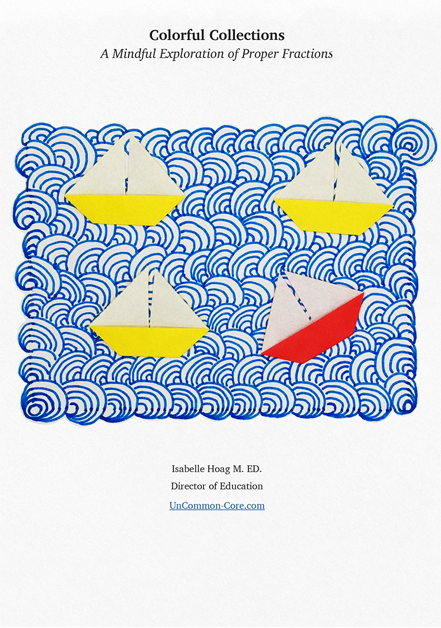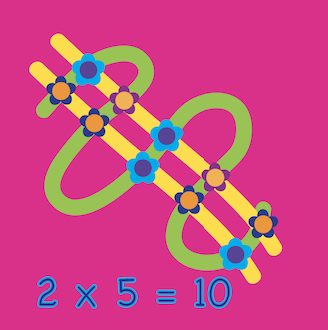
Try This New Way to Practice Multiplication Facts Today!
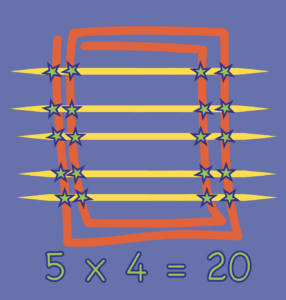
Your students will enjoy creating these squiggly designs to show multiplication facts. Learners who are familiar with Multicolor Multiplication will catch on quickly. These silly squiggle images may look easy at first, however there are a few hazards to beware of as kids get started. Make sure the squiggle in the background is large enough to show the multiplication fact selected. Next, the straight lines should cover the squiggle so that they are parallel to each other. Every line should cross each level of the squiggle so that the place where they overlap is clearly visible.
Start Small – Let’s Say Three Times Two
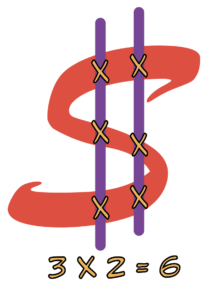
Give each student or small group the same multiplication fact to start with. This is not the time for 8×7!! This is the time for 4×3, or 2×4, or something very simple, like 3×2.
Have students use highlighters to squiggle an S shape on their paper (or on a 3×5 card). Point out that the S shape is made of three (more or less) horizontal lines. This is the 3 in the multiplication fact they are squiggling.
Now, have them use a ruler if you wish. Using a ruler to make the straight lines emphasizes that these lines are not squiggly. With a marker, pen, or pencil have the students make two vertical lines that overlap all three levels of the squiggle. Make sure that each of the vertical lines crosses the horizontal squiggly lines.
Students should circle each time the squiggle and the straight lines meet; the number of intersections should equal the product. Finally, they should write the multiplication fact shown by the squiggly design.
Ensure that your students can identify the squiggly S shape as the 3, the straight lines as 2 and the number of intersections as 6. When they can explain how each part of the design relates to the multiplication fact, they are ready to make some squiggly facts independently.
Get Creative with the Squiggles
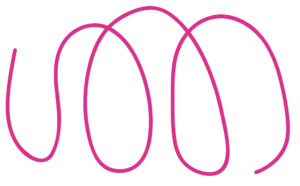
As soon as your students understand that the levels of the squiggle must be long enough to accommodate the straight lines, they can try new kinds of squiggles. Squiggles, or wriggles, can be made vertically, or diagonally. They can have square corners, loops, and other flourishes – as long as there is room for the straight lines to cross each level of the wriggly shape. The squiggles can be most any thickness or color.
Get Creative with Materials
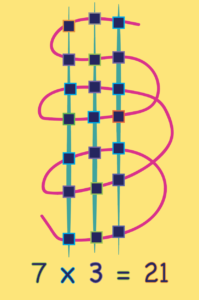
As soon as your students can accurately create squiggle designs to show multiplication facts, you can expand the activity by introducing different materials.
- Cut squiggles from construction paper and glue to a contrasting color of construction paper. Use yarn, highlighters, more cut paper to make the lines. Dip Q-tips in paint to mark where the lines overlap the squiggle. What a colorful display for the hall.
- With a cardboard base, pinch a squiggle out of some play clay. Use ribbon, lengths of card, or more play clay as the straight lines. Consider using push pins to mark the intersections. Photograph if you want to reuse the clay.
- Think Big! Tear off a rectangle of bulletin board paper. Paint a thick squiggle. After it dries, let students use yard sticks and thick markers to make the straight lines. When everything is dry again, students can use stencils to show where the squiggle and lines meet. This is the time for 12×9 or some other large multiplication fact.
- Check with the art teacher for any left over materials that you could use.
Project Ideas

Squiggle designs showing multiplication facts can be used at school and then sent home to help kids recall factors and products as needed.
- Assign students 2 or 3 multiplication facts. Think of the multiplication chart from 1 to 10, subtract out all the duplicate facts – 2×3 is the same as 3×2 so you don’t need both of them – then there are 55 facts that your students need to recall. Depending on the number of students in your class, each student wouldn’t have to create that many designs in order for the class to have an entire set of multiplication facts. If your students make their facts on printer paper, you can collect the pages, put them in order (or let your students do that) and slip the pages into transparent page protectors back to back. Put them in a three ring binder and add it to the class library. Consider making copies for each student to take home.
- Test your students to identify the more difficult facts. Have each student create a colorful squiggle design on construction paper for one or two of those facts. Create a beautiful and educational hallway display.
- Make a design assembly line. Have the first student write a multiplication fact on the page and send it to the next station. The next student will make the squiggle, the next the straight lines, the next will circle or put stickers on the intersections, and the last student will check to make sure that the design matches the multiplication fact.
- Decorate a bulletin board with some squiggle designs. Place the corresponding multiplication facts along the edge of the board. Each day that week have the class match the fact to the squiggle designs with yarn or ribbons. After class, remove the yarn or ribbons, and move and/or spin the squiggles around. Again – start small – then build to larger numbers as the weeks go on.
I hope you and your students enjoy creating squiggle designs to show multiplication facts.
For more information on the benefits of combining math and art, read:
Exploring the Math and Art Connection: Teaching and Learning Between the Lines
By Daniel Jarvis, Irene Naested
Share This Story, Choose Your Platform!
Download Colorful Collections:
A Mindful Exploration of Proper Fractions
Help your students make sense of fractions.
I started teaching in 1987, which means I’ve collected many tips and tricks along the way. In this ebook, I share concepts, strategies, and classroom materials to help you make math sticky.
Along with this useful ebook, you will receive weekly emails from StickyMath@UnCommon-Core.com. I send information like: teacher tips, educational ideas, book reviews, curated lists, reviews of educational sites, and free first drafts of products that I’m creating for my TPT store. That way, you get helpful ideas and free stuff, while I get some feedback before I finalize products and put them up for sale.
I value your privacy. I will never sell your information. You may unsubscribe at any time.
All the best!
Isabelle
Isabelle Hoag M. Ed.
